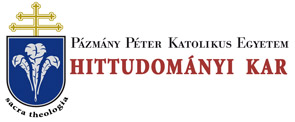Folia Theologica et Canonica 10. 32/24 (2021)
Ius canonicum
EXEGESIS ON MOTU PROPRIO SUMMORUM PONTIFICUM BY BENEDICT XVI 125 formula in SP is correct in a liturgical, canonical and pastoral sense, independently of its content and subject, and it satisfactorily resolves or avoids the problem that talking about a canonical-ecclesiological “bi-rituality” of the priests and the faithful of the Roman Rite would have raised, if that had been what was intended, which, at any rate, is not the case. I am not aware of the existence of any precedents of a solution such as this one of Benedict XVI’s. While still a cardinal, he had been against both the freedom of the faithful to belong to various ecclesiastical structures, because the roots of this action can be found in sacramental baptism and to the complex situation of a possible canonical-factual co-existence of diverse and successive states, equally for priests and faithful alike, encompassed within one same liturgical rite. For this reason, the solution proposed by SP does not in any way compromise the unity of the Roman Rite; on the contrary, it is an authentic allegation in its defence. This viewpoint is, in effect, one of its key hermeneutical elements. One can now understand the insistence of Benedict XVI to the bishops: “It is not appropriate to speak of these two versions of the Roman Missal as if they were “two Rites Rather, it is a matter of a twofold use of one and the same rite” (GF paragraph 4). The real problem here is not the use of the term “rite”, but the possibility of confusion in its meaning, as it can express various concepts, and be associated with opposing ideas. The number of authors who, from preconceived ideas and contradicting viewpoints, give their opinion on the subject are quite a few, often with hardly any knowledge; many of them also bring an erroneous evaluation of the notion of “rite” into the equation, and they get stuck in historical-comparative analyses of the “two usages of the one Roman Rite” (SP art. 1 § 1) as if they were two rites, and not just one, sole rite. In SP, Benedict XVI does not analyse the liturgical sense of the “rite” in general, because the notion in itself does not resolve anything nor does it help the hermeneutic of renewal in continuity, desired by the Pope, and which at the same time is the basic principle in his defence of the unity of the Roman Rite. The pontiff is much more concerned about the theological, doctrinal and ecclesiological division which some people have sought by means of the changes made in the liturgy, than about the eventual liturgical co-existence of “two Roman Rites”. In other words, SP does not objectively analyse whether the differences between the elements of both of the uses could or could not turn them into two liturgically different rites, irrespective of the ecclesiological-canonical status of the celebrant or the faithful. In another order of things, regarding the most profound ecclesiological sense, a “bi-rituality” of the Roman Rite would be irrelevant in the Latin Church, for the liturgical “multi-rituality” is already present within it, as demonstrated by the existence of the Mozarabic Rite, very different to the Roman Rite, whose Latin faithful are liturgically bi-ritualistic, even though they
